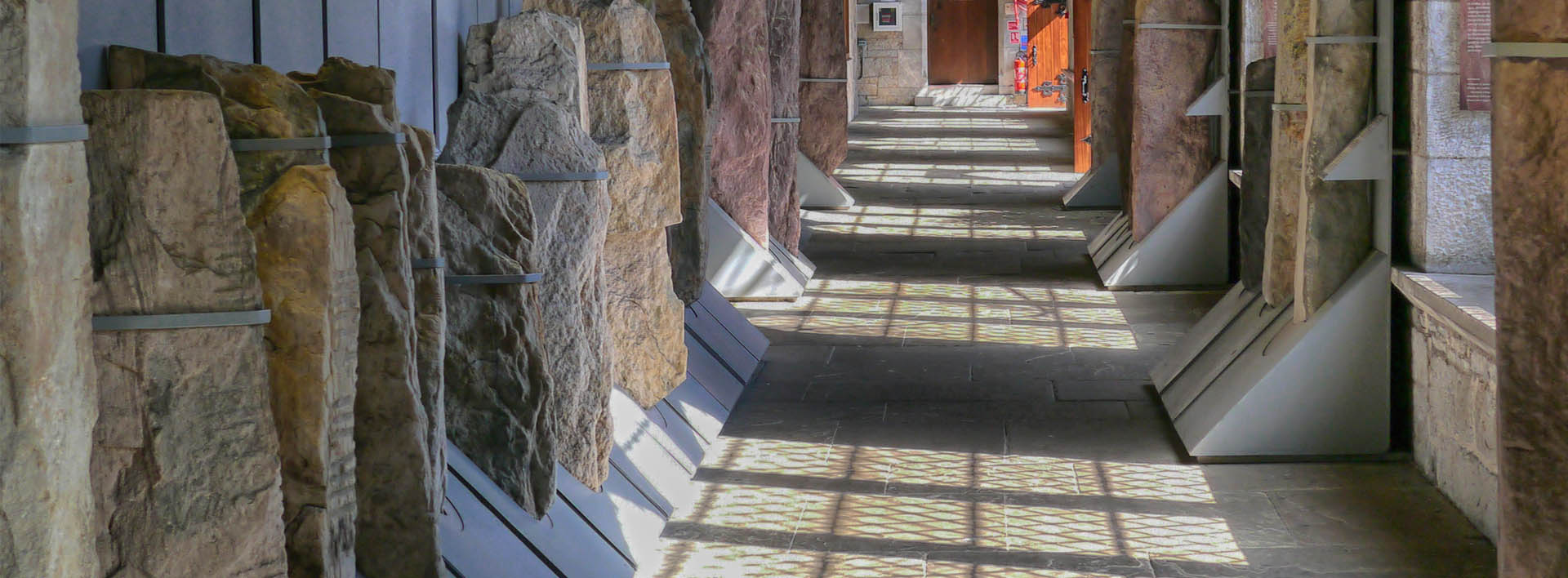Stone Corridor

Stone Corridor, North Wing, UCC
The Stone Corridor provides a covered walkway westwards from the Aula Maxima corridor, under the main arch, and southwards to the end of the West Wing.
The cloisters contain a collection of Ogham Stones illustrating an early coded form of the Irish language. These are ancient gravestones, each one marking the burial place of a distinguished person in a Celtic tribe, a chieftain or a bard, and date from the second or third century of the Christian era - the period before Saint Patrick came to Ireland.
Letters represented by grooves and notches record simple genealogical statements of the period 300-600 AD. Many scholars believe that the Ogham alphabet is related to the Latin alphabet.
Ogham Stones
UCC's collection of Ogham Stones in the North Wing of the Quadrangle is the result of the activity of antiquarian collectors, mainly in the 19th century. They would have stood in open country across the south and southwest of Ireland. They are also to be found in Cornwall in southwest England, and in southwest Wales. Some Ogham Stones were removed and re-used at various times - for example, lintels in early medieval underground passages called Sousterrains.
Ogham comprises a set of twenty or so letters of the Latin alphabet, transcribed into incisions and notches made on the corner edge of a quarried slab of stone. A key to its translation was discovered in a medieval religious text. This marked the first time that Irish was written down. Using this translation, it is possible to read the Ogham script, from the bottom of the stone up.
Most scripts conform to a pattern incorporating genealogical descent - for example (in Latin) "X son of Y" and other social elements such as "of the tribe Z". As such, they are frequently described as 'grave markers', although no evidence (eg: associated burials) of this function has been found by archaeologists. They may be commemorative, even in the absence of burials, or they may have been used as boundary markers.
Archaeologists place Ogham Stones in the date-range of the 4th to the 8th centuries AD, so an approximate average age may be 1500 years. What is significant about them is that they are testimony of the arrival of the use of Latin, spread by the Roman Empire as far as Great Britain, and via cultural exchange in Ireland. They show that Irish and Latin existed side by side, probably only in religious establishments such as monasteries, at the time of the emergence of Christianity in Ireland. These stones span the period of conversion to Christianity. Those with Christian associations are the earliest evidence of Christianity in Ireland.
The collection also contains a medieval stone 'quern' (for milling grain), a cross-slab from the early medieval period and a cup-marked stone - of debateable function - some three to four thousand years old.
